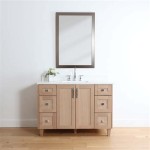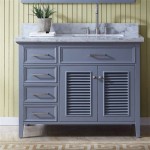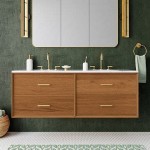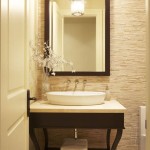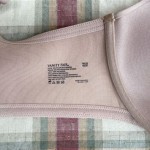```html
40 Inch Vanity Top With Sink: A Comprehensive Guide
A 40-inch vanity top with a sink represents a common and practical choice for bathrooms of various sizes. Its dimensions strike a balance between providing ample counter space and fitting comfortably within standard bathroom layouts. Choosing the right vanity top, however, involves careful consideration of several factors, encompassing material selection, sink type, style, and installation requirements. This article provides a detailed overview of 40-inch vanity tops with sinks, covering essential aspects to assist in making an informed purchase decision.
Understanding Standard Dimensions and Space Considerations
The term "40-inch vanity top" typically refers to the overall width of the vanity, accommodating a sink and surrounding counter space. The actual sink dimensions will be smaller, dictated by the chosen sink style and installation method. It is crucial to accurately measure the available space in the bathroom before purchasing a vanity top. Consider the following:
Width:
Ensure the 40-inch vanity top fits comfortably between any adjacent walls or fixtures, allowing for adequate clearance.Depth:
Standard vanity depths typically range from 18 to 22 inches. Account for this depth to ensure sufficient walkway space in the bathroom.Height:
The height of the vanity, including the top, is usually between 30 and 36 inches. This is a standard height, but personal preferences and considerations for accessibility might influence the choice.When planning, also account for plumbing access. The existing plumbing configuration might dictate the placement of the sink bowl and the type of installation that is possible. Moving plumbing can add significantly to the cost of the overall project.
Exploring Material Options for 40-Inch Vanity Tops
The material of the vanity top significantly impacts its appearance, durability, maintenance requirements, and cost. Several popular options are available, each with its own set of advantages and disadvantages.
Granite:
Granite is a natural stone renowned for its durability, heat resistance, and unique veining patterns. It is a relatively high-end choice, offering a luxurious aesthetic. Granite requires sealing to prevent staining and can be heavy, potentially necessitating reinforced cabinetry.Quartz:
Quartz is an engineered stone composed of crushed quartz crystals and resin binders. It offers consistent coloration and pattern, high durability, and resistance to staining and scratching. Quartz is often more expensive than some alternatives but provides a low-maintenance option.Marble:
Marble is another natural stone prized for its elegant appearance and veining. However, it is more porous than granite and quartz, making it susceptible to staining and etching. It requires diligent sealing and care. Marble is a classic choice that enhances the value of the bathroom.Solid Surface:
Solid surface materials, such as Corian, are engineered polymers that offer seamless integration and a non-porous surface. They are resistant to stains and scratches and can be easily repaired. Solid surface materials can be molded into various shapes and configurations.Laminate:
Laminate vanity tops consist of a thin layer of decorative plastic bonded to a particleboard core. Laminate is a cost-effective option, available in a wide range of colors and patterns. However, it is less durable than other materials and susceptible to water damage if the edges are not properly sealed.Cultured Marble:
Cultured marble is a manufactured material consisting of marble dust and resin. It is less expensive than natural marble and offers a non-porous surface. Cultured marble can be prone to scratching and yellowing over time.When selecting a material, carefully consider the budget, aesthetic preferences, and lifestyle. A busy household with children might benefit from the durability and low maintenance of quartz or solid surface, while someone seeking a luxurious look might opt for granite or marble, understanding the required maintenance.
Choosing the Right Sink Type for Your 40-Inch Vanity Top
The sink is an integral component of the vanity top, influencing both aesthetics and functionality. Various sink types are available, each designed for specific installation methods and visual styles.
Undermount Sinks:
Undermount sinks are installed beneath the vanity top, creating a seamless transition and maximizing counter space. They are easy to clean, as debris can be wiped directly into the sink. Undermount sinks require a solid surface countertop material like granite, quartz, or solid surface.Drop-In Sinks:
Drop-in sinks, also known as self-rimming sinks, are installed by dropping them into a pre-cut hole in the vanity top. The rim of the sink rests on the countertop, providing a finished edge. Drop-in sinks are relatively easy to install and can be used with a wider range of countertop materials.Vessel Sinks:
Vessel sinks sit on top of the vanity countertop, creating a striking visual statement. They come in various shapes, sizes, and materials. Vessel sinks require a specific type of faucet designed for their height and placement. Adequate counter space around the vessel sink is important.Integrated Sinks:
Integrated sinks are molded directly into the vanity top, creating a seamless and hygienic surface. They are typically made of solid surface or cultured marble. Integrated sinks offer easy cleaning and a streamlined look.Console Sinks (with vanity top):
While technically a sink and integrated support, some console sink designs feature a small, integrated vanity top area. These are often chosen for their sleek and modern aesthetic, particularly in smaller bathrooms.The choice of sink type depends on personal preferences, the desired aesthetic, and the practicality of installation. Undermount sinks are a popular choice for their clean lines and ease of cleaning, while vessel sinks offer a more dramatic and unique look.
Style Considerations: Matching the Vanity Top to the Bathroom Design
The style of the 40-inch vanity top and sink should complement the overall bathroom design. Consider the following stylistic elements:
Color:
The color of the vanity top should coordinate with the wall color, flooring, and other bathroom fixtures. Neutral colors like white, gray, and beige are versatile choices that blend well with various color schemes. Bold colors can add a dramatic touch but should be carefully coordinated.Edge Profile:
The edge profile of the vanity top can significantly impact its appearance. Common edge profiles include eased edges, bullnose edges, and ogee edges. The chosen edge profile should complement the overall style of the bathroom.Faucet Style:
The faucet should be selected to match the sink type and the overall style of the bathroom. Consider factors such as faucet height, spout reach, and handle style. Finishes such as chrome, brushed nickel, and oil-rubbed bronze are popular choices.Cabinetry Style:
If the vanity top is being installed on existing cabinetry, ensure that the style of the top complements the cabinet doors and hardware. Consider the overall aesthetic of the cabinetry, whether it is modern, traditional, or transitional.By carefully considering these stylistic elements, a cohesive and visually appealing bathroom design can be achieved.
Installation Considerations for 40-Inch Vanity Tops with Sinks
The installation of a 40-inch vanity top with a sink typically involves several steps and might require the assistance of a professional plumber or contractor.
Preparation:
Begin by removing the existing vanity top and sink, if applicable. Ensure that the area is clean and free of debris. Verify that the new vanity top fits properly and that the plumbing connections align.Sink Installation:
Install the sink according to the manufacturer's instructions. For undermount sinks, ensure that the sink is securely attached to the countertop using appropriate adhesives or mounting hardware. For drop-in sinks, apply a bead of sealant around the rim of the sink before dropping it into the pre-cut hole.Faucet Installation:
Install the faucet according to the manufacturer's instructions. Connect the water supply lines to the faucet and ensure that all connections are tight. Check for leaks after turning on the water supply.Plumbing Connections:
Connect the drain assembly to the sink and connect the drainpipe to the existing plumbing. Ensure that all connections are tight and that the drain is properly sealed to prevent leaks.Sealing:
Apply a bead of sealant around the edges of the vanity top where it meets the wall or backsplash. This will prevent water from seeping behind the vanity and causing damage.It is crucial to follow the manufacturer's instructions and to take precautions to prevent damage to the vanity top and plumbing fixtures. If unsure about any aspect of the installation process, consult a qualified professional. Improper installation can lead to leaks, water damage, and costly repairs.
Maintenance and Care for Your Vanity Top
Proper maintenance is essential for preserving the appearance and longevity of the 40-inch vanity top with a sink. The specific maintenance requirements will vary depending on the material of the vanity top.
Granite and Marble:
Seal granite and marble vanity tops regularly to prevent staining. Clean spills immediately with a mild detergent and water. Avoid using abrasive cleaners or harsh chemicals.Quartz:
Clean quartz vanity tops with a mild detergent and water. Quartz is resistant to staining, but it is still important to clean up spills promptly. Avoid using abrasive cleaners or harsh chemicals.Solid Surface:
Clean solid surface vanity tops with a mild detergent and water. Solid surface materials are non-porous and easy to clean. Minor scratches can be buffed out with a mild abrasive cleaner.Laminate:
Clean laminate vanity tops with a mild detergent and water. Avoid using abrasive cleaners or excessive water, as this can damage the laminate. Pay close attention to the edges and seams to prevent water damage.Regular cleaning and proper care will help to maintain the beauty and functionality of the vanity top for years to come.
```
Home Decorators Collection Hampton Harbor 45 In W X 22 D 35 H Single Sink Freestanding Bath Vanity White With Marble Top Bf 23148 Wh The

Allen Roth Vanover 45 In White Single Sink Bathroom Vanity With Natural Marble Top At Com

On Hampton Harbor 45 In W X 22 D Bath Vanity White With Black

Hampton Harbor 45 In W X 22 D 35 H Single Sink Freestanding Bath Vanity Sequoia With Black Granite Top

Home Decorators Collection Hampton Harbor 45 In W X 22 D 35 H Single Sink Freestanding Bath Vanity White With Marble Top

Winslow 45 In Single Sink Freestanding Antique Gray Bath Vanity With White Marble Top Assembled

Silkroad Exclusive 45 In White Undermount Single Sink Bathroom Vanity With Carrara Natural Marble Top The Vanities Tops Department At Com

45 Antillo Single Bath Vanity Bathgems Com

45 In Beige Quartz Counter Top With Rectangular Sink

Winslow 45 In Single Sink Freestanding Antique Gray Bath Vanity With White Marble Top Assembled
